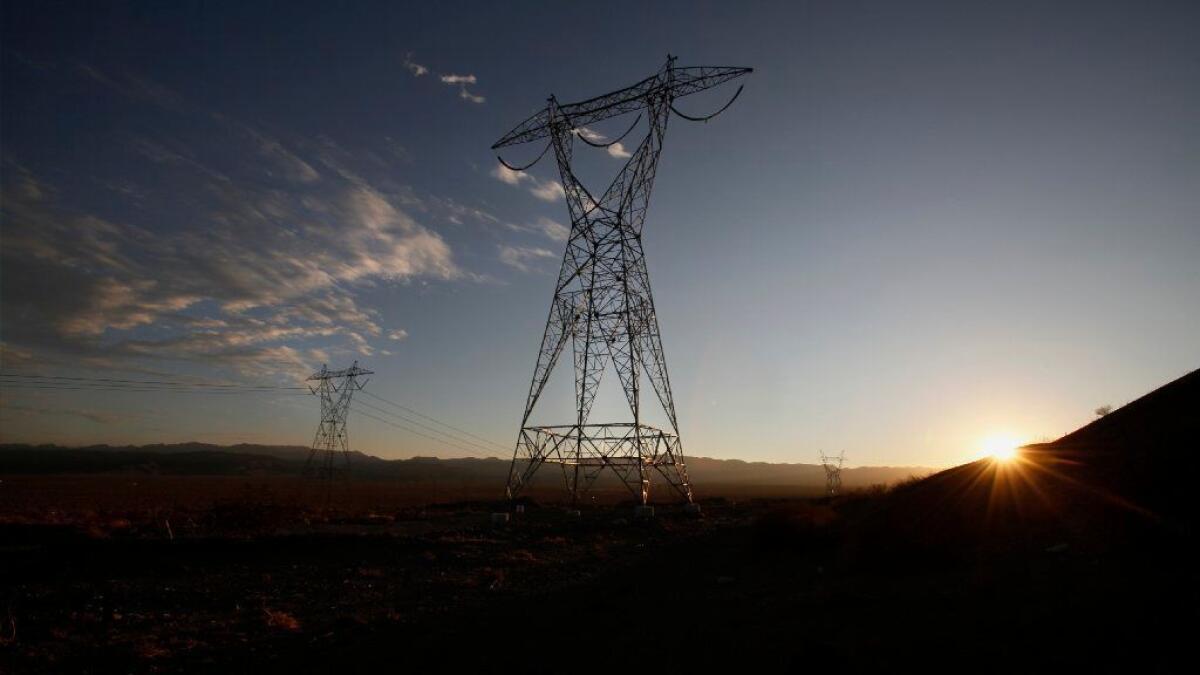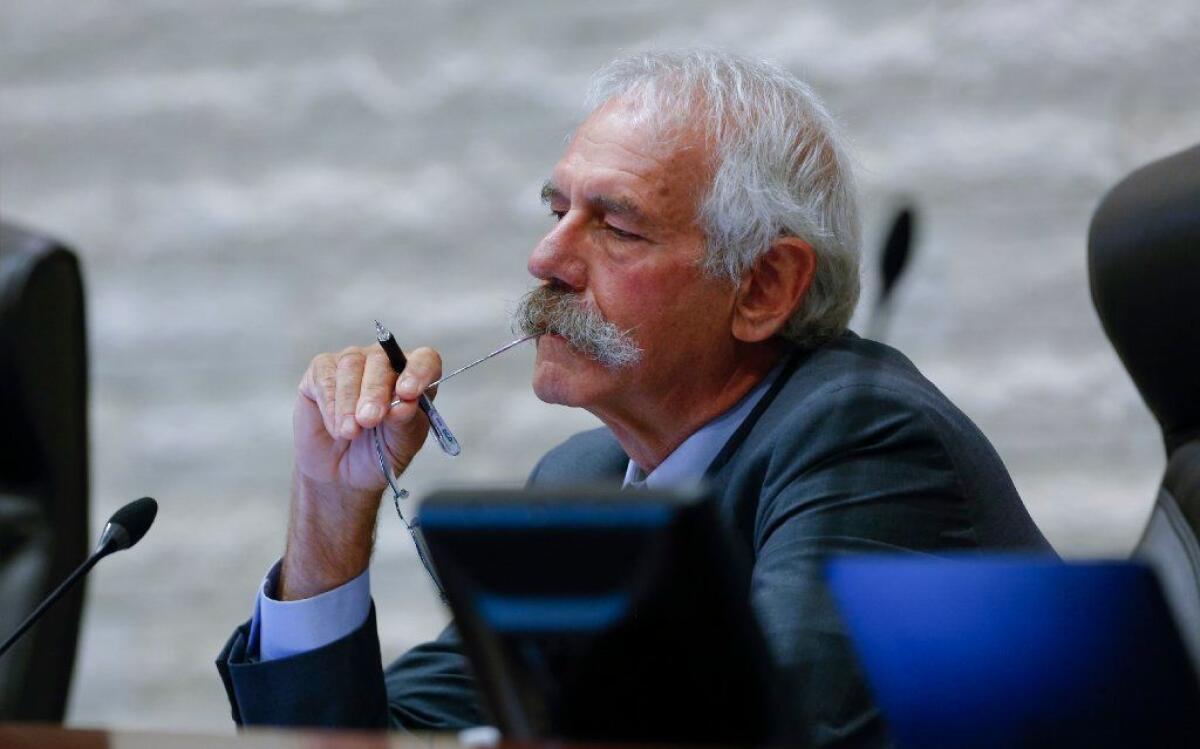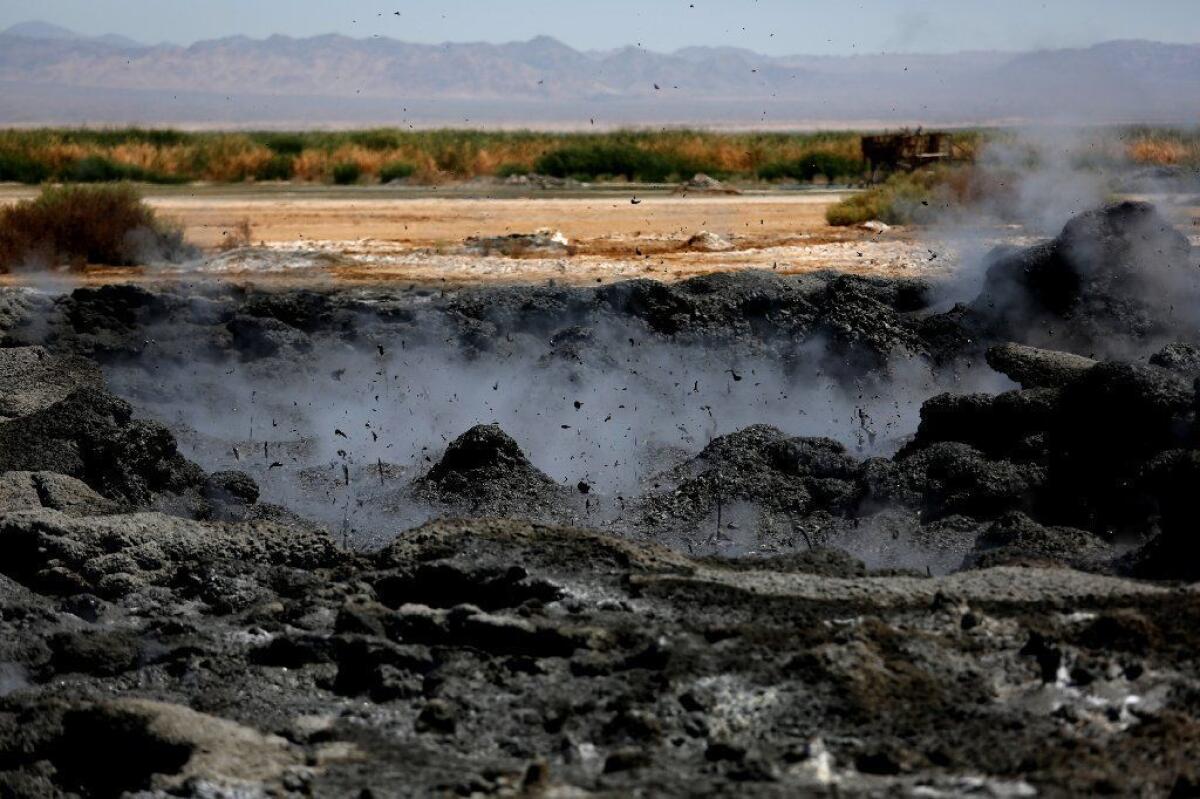California’s biggest utilities are losing their monopolies. Is that a good thing?

- Share via
San Diego’s decision to go into the power business was the last straw.
Ever since the city’s announcement last year, San Diego Gas & Electric has been telling state lawmakers it wants out of the business of buying and selling electricity. That may sound like a radical plan for a monopoly utility with nearly 1.5 million customers and annual profits that regularly exceed $500 million.
But given the state’s rapidly shifting energy landscape, it might actually make sense.
California’s three big investor-owned utilities — Southern California Edison and Pacific Gas & Electric are the other two — are losing a growing number of customers to government-run power providers called community choice aggregators, or CCAs. There’s a good chance the monopoly utilities will lose the vast majority of their energy sales to CCAs and other energy providers over the next few years.
And the utilities don’t profit from energy sales, anyway — they’re allowed to charge customers only what they paid for electricity on the market.
But the investor-owned utilities do earn a regulated profit when they invest in infrastructure projects, such as building and operating the poles and wires of the power grid, or installing electric vehicle charging stations. So why not stop signing contracts for electricity supply and become infrastructure companies exclusively?
“We don’t think we should be signing big, long-term contracts for customers that have made a conscious choice to be served by a different” power provider, said Kendall Helm, SDG&E’s vice president of energy supply. “We think our primary role and our primary value is in the safe and reliable delivery of that power.”
Here’s how local governments are replacing California’s biggest utilities »
Edison and PG&E, whose poles and wires span most of the state, haven’t suggested they’re ready to stop buying and selling power. But they face the same conundrum as SDG&E: Dozens of cities and counties across their service territories are choosing to become their own energy providers.
California had 19 community choice providers serving 2.6 million homes and businesses last year. Nearly 1 million homes in Los Angeles and Ventura counties are being enrolled this month in Clean Power Alliance, the state’s biggest CCA.
Advocates say CCAs empower local officials to set electricity rates for their communities and to increase the use of climate-friendly energy sources such as solar and wind power more quickly than the big utilities.
But the erosion of California’s century-old utility monopolies has alarmed some regulators. They worry that without new safeguards, the shift from a handful of big utilities to a decentralized system with dozens of energy providers could have unintended consequences — possibly including a repeat of the state’s early-2000s energy crisis, when a failed experiment in deregulation led to rolling power outages and ballooning electricity costs.
One of the leading community choice skeptics is Michael Picker, president of the California Public Utilities Commission and a former renewable energy advisor to then-Gov. Jerry Brown. Picker has spearheaded a series of reports outlining potential risks posed by the rise of alternatives to the big utilities, not just CCAs but also rooftop solar, home battery systems and companies buying energy through a limited competitive market.
Picker has two main concerns.
The first is that non-utility energy providers don’t have as long a track record as the utilities, and aren’t regulated by the PUC as stringently. What would happen, Picker has asked repeatedly, if one or more of the CCAs failed? Who would be responsible for keeping the lights on for the stranded customers?
Those questions are especially potent because unlike in some other states, lawmakers here haven’t designated a “provider of last resort” that would serve homes and businesses whose electricity provider fails.
Right now, the three big utilities play that role by default in their service territories because they’re obligated to take back customers who decide to leave a CCA. But in a world where Edison, PG&E and SDG&E mostly or entirely get out of the electricity sales business, it may no longer be feasible for them to provide that backstop.
Picker told attendees at a conference in Los Angeles last week that California faces the same challenges it dealt with in the last energy crisis, including fragmented decision-making and poorly coordinated electricity purchasing, and doesn’t have a plan for what to do if a new energy provider can no longer serve customers.
“There isn’t a crisis today. But we have de facto deregulation, and without a clear plan in place, we can slide into the problems we had in the past,” Picker said in a video recorded for the VerdeXchange conference.
Californians are paying billions for power they don’t need »
Picker’s other concern has to do with the state’s climate change goals, including a mandate of 100% climate-friendly electricity by 2045.
Achieving that target will be no easy feat. As planet-warming, gas-fired power plants shut down, balancing supply and demand on the grid is expected to become an increasingly complicated dance involving constant swings in solar and wind power, millions of electric vehicle batteries that could either drain or supply electricity on the grid, and hundreds of other clean-energy technologies and innovations.
“When you have all these different ways that people can have individual choices, it gets harder to guarantee, when you put it all together, that we’re meeting our clean energy goals,” Picker said in an interview this week.
Community choice advocates largely dismiss those concerns as fearmongering.
They point to the strong track record of the state’s first CCA, Marin Clean Energy, which launched in 2010 and now serves nearly half a million customers in the Bay Area. They say Marin and other early CCAs have shown that cities and counties can provide reliable energy at rates competitive with the big utilities, while meeting the state’s climate goals.
Woody Hastings, a longtime community choice advocate with the Santa Rosa-based Center for Climate Protection, thinks regulators such as Picker feel threatened by the collapse of the monopoly utility model.
“Previously it was the utilities that were getting worried,” Hastings said. “What we’re seeing now is the regulators are also worried that their authority is being eroded.”

Dawn Weisz, chief executive officer of Marin Clean Energy, said she agrees with Picker that it’s important to define a provider of last resort. But she said it’s ironic that Picker continues to discuss the supposed dangers of CCAs when one of the monopoly utilities he regulates, PG&E, filed for bankruptcy protection last week.
“Any utility can fail, as we’re seeing this week,” Weisz said. “Although we haven’t seen a CCA fail yet.”
PG&E’s bankruptcy could slow California’s fight against climate change »
Those objections haven’t stopped lawmakers, ratepayer advocates and the PUC from proposing solutions to what they see as the shortcomings of CCAs and other non-utility energy options.
Eduardo Garcia, a Democrat who represents Imperial County in the Assembly, introduced a bill late last year that would order regulators to study the creation of a “central statewide entity” to buy renewable energy for ratepayers across California.
“We need to have a balanced grid that will bring forward the reliability we need,” Garcia said.
The details of Assembly Bill 56 are still a work in progress. But supporters say a central buyer would be capable of purchasing clean energy resources that benefit the state as a whole but are too big or too expensive for any one community choice agency, such as geothermal power plants, massive offshore wind farms or “pumped storage” hydropower facilities that can bank electricity from solar or wind farms.
Those types of resources could make the transition to 100% climate-friendly power safer and cheaper, said Matt Freedman, an attorney with the Utility Reform Network, a San Francisco-based ratepayer advocacy group that has worked with Garcia on the central buyer legislation. While lawmakers should respect the autonomy of the CCAs, he said, “there’s always going to be a need for some kind of central planning entity to fill the gaps.”
“One of the key lessons we take away from the history of the electric system is the failure to plan usually leads to bad results,” Freedman said. “The fear is that the new model looks more like chaos than anything else.”

SDG&E, meanwhile, has pitched state lawmakers on a more expansive central buyer that would allow the utility to offload any electricity-sales customers who aren’t served by a CCA.
The company’s proposed legislation calls for a task force that would determine how energy-purchasing responsibilities could be transferred from investor-owned utilities to a state-level entity. In SDG&E’s imagining, the central buyer would serve as the emergency provider of last resort or would contract with a third party for that service.
The task force established by SDG&E’s proposed legislation would also make recommendations for regulating CCAs and other non-utility energy providers “to encourage customer choice while ensuring electrical grid reliability and attainment of the state’s greenhouse gas reduction goals.” Asked why it matters to SDG&E how community choice providers are regulated after the company leaves the electricity marketplace, Helm pointed out that the investor-owned utility will still operate the power grid for millions of people served by CCAs.
“Whether we are in the business of buying electricity or not, these are our customers, and we want to be able to serve them well and deliver reliable and safe energy to them,” Helm said.
It’s not clear what stances Edison and PG&E will ultimately take on a central buyer concept. Asked about the proposals from Garcia and SDG&E, Colin Cushnie, Edison’s vice president of energy procurement and management, said the company is “doing a lot of thinking about the relative pros and cons of that approach.”
Community choice advocates have tended to oppose any kind of central buyer, including a relatively limited proposal from the PUC that would make the investor-owned utilities responsible for buying certain emergency power supplies for everyone within their service territories, including CCA customers. The CCAs see a state-level entity wading into the electricity-buying business as a threat to the core reason for their existence, which is to give local communities the power to choose their own energy supplies.
What you need to know about Clean Power Alliance, SoCal’s newest electric company »
Ted Bardacke, executive director of the Clean Power Alliance CCA in Los Angeles and Ventura counties, thinks the central buyer proposals he’s heard are “going in the wrong direction.” California, he said, is moving toward a more distributed energy system with more choices for customers, in which nimble, locally run agencies help people install solar on their rooftops, charge electric vehicles in their garages, and manage their energy with smart appliances and other new technologies.
He sees a centralized agency, which would more than likely promote the development of big, centralized power projects, as an idea whose time has passed.
Matt Langer, Clean Power Alliance’s chief operating officer, described a central buyer as a solution in search of a problem — especially as CCAs sign a growing number of long-term contracts for renewable energy.
“I’m not really sure what void is being filled by taking away power from the local communities,” Langer said.
More to Read
Inside the business of entertainment
The Wide Shot brings you news, analysis and insights on everything from streaming wars to production — and what it all means for the future.
You may occasionally receive promotional content from the Los Angeles Times.











